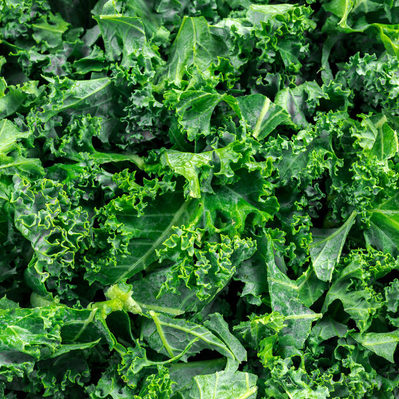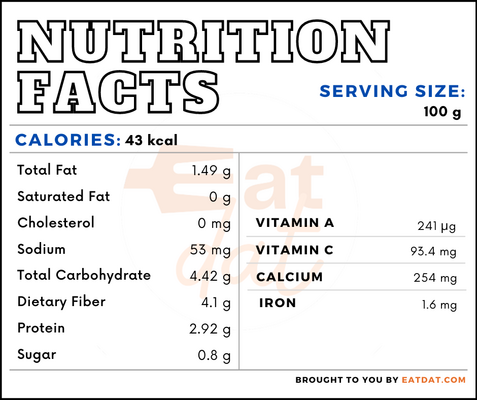
Kale
One of the most popular foods among healthy eaters nowadays is kale. It is a leafy cruciferous vegetable that has a high nutritional value. It belongs to the Brassica oleracea family, similar to cauliflower, broccoli, brussels sprouts, and cabbage. There are different types of kale such as:
- Winter Red
- Red Chidori
- Lacinato
- Siberian Kale
Origin
Kale was extremely popular in the Mediterranean area as far back as 4,000 years ago. There are references to it in ancient Greek and Roman texts as well. By the time the Middle Ages dawned, people in the rest of Europe and Asia had also started to eat this cruciferous vegetable. Today, it has again become very popular as a healthy food around the world.
Why eat kale?
It is a highly nutritious food that is high in carotenoids, vitamin A, vitamin B6, vitamin C, vitamin K, folate, calcium, iron, manganese, and dietary fiber. It also has a significant amount of protein. This vegetable is also full of antioxidants. It’s practically a superfood and can help prevent diseases like diabetes, heart diseases, and Alzheimer’s. Kale is also a great dish that assists in healthy weight loss because of its low-calorie content.
A 100g serving of fresh kale contains:

However, people with thyroid problems should refrain from over consumption. Raw kale can also be a problem for those with hypothyroidism as it contains a significant amount of progoitrin, a compound that affects the function of the thyroid gland. It also has a good amount of indigestible fiber, so it is again a good idea to limit its consumption, especially among those with indigestion and acidity problems.
How to cook kale?
Consumption of kale should be avoided, especially by people with thyroid problems. Boiling or frying reduces some of its health benefits, but steaming is a very popular and useful method of making recipes, since this method often retains all the vitamins and minerals of the vegetable. Another great way to ensure it retains its nutrients is by baking it in different recipes. When prepared properly, it’s also quite delicious and there are multiple ways to make this wonderful vegetable.
Popular recipes
Here are a couple of popular and healthy recipes.
Kale Chips: One of the most popular recipes is kale chips. This is prepared by placing whole pieces on a baking sheet and coating them with oil before sprinkling them with salt and other spices and baking for around 15 minutes. This recipe is easy to make, nutritious, and is extremely popular as a snack.
Stir Fried: This is another staple that can go with rice or bread. Heat olive oil on a pan. Put thinly sliced garlic in it until it cooks and then add the kale. Add a bit of water and cover it until it cooks. Season with salt and pepper.
Tips for storing and using kale
- Store in the refrigerator. For best results, wrap it in paper and put it into a plastic bag for maximum freshness.
- Never wash kale before storing. The moisture will make it limp and it will lose its freshness much faster.
- If stored properly, this vegetable can retain its freshness for around 5 to 7 days.
- It needs to be washed thoroughly under running water before eating. Like most other leafy vegetables, it tends to gather dust and dirt.
As we can see, kale is a versatile and nutrients-rich food. Hence, it is a great idea to incorporate it in your daily diet.
References
Fahey, in Encyclopedia of Food Sciences and Nutrition (Second Edition), 2003. https://www.sciencedirect.com/science/article/pii/B012227055X001188
Colon, G.S. Toor, in Advances in Agronomy, 2016. https://www.sciencedirect.com/science/article/pii/S0065211316300815
Harvard School of Public Health. https://www.hsph.harvard.edu/nutritionsource/food-features/kale/
